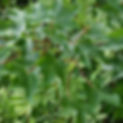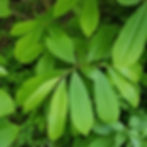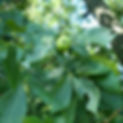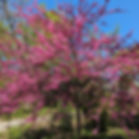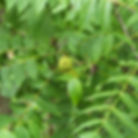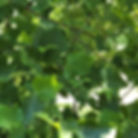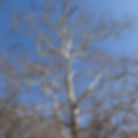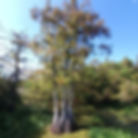25 Trees Native to Kentucky
- Zac Gnadinger
- Aug 30
- 11 min read
Updated: Sep 4

Kentucky is home to a remarkable variety of native trees. More than 120 different species occur in the state, each playing a unique role in shaping the landscape and supporting our diverse ecoregions. From the towering Tulip Tree and the stately White Oak to the understory charm of the Flowering Dogwood, these species provide vital habitat, seasonal beauty, and economic significance.
In this list, we’ll cover 25 common trees that are widely distributed throughout Kentucky. Some you might recognize, and others might be new to you. If you’re into nature, hiking, gardening, or just curious about what’s growing around you, this guide is a great place to start.
Trees Native to Kentucky
If you want to learn even more about the native trees of Kentucky, we highly recommend the book "Trees & Shrubs of Kentucky." It's an invaluable source of information, and was referenced when creating this list. (#Promotion)

As you read through the list, consider planting one of these trees. Many are available from our local native plant nurseries.
Let's get started.
1. Red Maple
Red Maple (Acer rubrum) is one of the most common and adaptable trees in Kentucky, thriving in a variety of soils and environments. Known for its vibrant red foliage in the fall, it also displays red buds in early spring and red stems throughout the year. This medium to large-sized tree typically grows 40 to 70 feet tall, providing excellent shade. Its rapid growth and striking seasonal color make it a popular choice for both urban and natural landscapes. For more native plants suited for landscaping, check out our article here.
2. Ohio Buckeye
Ohio Buckeye (Aesculus glabra) is a small to medium-sized deciduous tree native to Kentucky, typically growing 20 to 40 feet tall. It's best known for the shiny, dark brown nuts it produces, which have a light tan eye and are encased in spiny husks. Though attractive, the nuts are toxic to humans and many animals, and may be fatal if ingested. The tree has distinctive palmate compound leaves and clusters of green to yellow spring flowers. The Ohio Buckeye is often found along streambanks and in rich woodlands, adding a unique texture and interest to the landscape.
3. Common Pawpaw
Common Pawpaw (Asimina triloba) is a small understory tree native to Kentucky, typically reaching 15 to 30 feet in height. It thrives in moist, shaded conditions of nutrient-rich forests. This unique tree produces the largest native fruit of North America, which has a custard-like texture and tastes like a blend of mango, banana, and pineapple. In the spring, maroon-colored flowers emerge that are pollinated by flies and beetles. The pawpaw fruit is a significant food source for wildlife and is gaining popularity among foragers and gardeners.
4. River Birch
River Birch (Betula nigra) is a fast growing, medium to large deciduous tree native to Kentucky, commonly found along rivers, streams, and floodplains. River Birch is tolerant of a wide variety of soils and is often used in landscaping for its ornamental value. It typically reaches heights of 40 to 70 feet and is well-known for its attractive, peeling bark, which ranges in color from creamy tan to reddish-brown. Its small, toothed leaves turn a soft yellow in the fall, adding seasonal interest.
5. American Hornbeam
American Hornbeam (Carpinus caroliniana), also known as Musclewood or Blue Beech, is a small, slow-growing deciduous tree native to Kentucky’s moist woodlands and streambanks. It typically reaches 20 to 35 feet in height and has smooth gray bark with bumps underneath that resemble flexed muscles. The tree features finely serrated, dark green leaves that turn shades of yellow, orange, and red in the fall. American Hornbeam is an excellent choice for naturalized landscapes and shady gardens, offering both beauty and durability.
6. Shagbark Hickory
Shagbark Hickory (Carya ovata) is a tall, long-lived deciduous tree native to Kentucky, often reaching heights of 70 to 90 feet. It’s easily recognized by its distinctive bark, which peels away in long, shaggy strips, hence its common name. The tree produces edible nuts encased in thick husks, which serve as a valuable food source for wildlife, including squirrels, chipmunks, and turkeys. Its compound leaves turn a rich golden-yellow in the fall, adding seasonal beauty to forests and landscapes.
7. Eastern Redbud
Eastern Redbud (Cercis canadensis) is a small, ornamental tree native to Kentucky, typically growing 20 to 30 feet tall. It’s best known for its stunning display of pink flowers that bloom in early spring, often before the leaves emerge, along its bare branches. The tree’s heart-shaped leaves provide attractive summer foliage, which turns a yellowish hue in the fall. Eastern Redbud thrives in a variety of soils and is often found along the edge of woodlands. Its compact size and vibrant spring color make it a favorite choice for home landscapes and naturalized areas.
8. Flowering Dogwood
Flowering Dogwood (Cornus florida) is another beloved small tree native to Kentucky, typically reaching 15 to 30 feet in height. It's renowned for its showy spring blossoms, which appear as white bracts surrounding yellow-green flowers. In summer, it features lush green foliage that turns vibrant shades of red and purple in the fall, along with clusters of bright red berries that attract birds and other wildlife. Flowering Dogwood thrives in well-drained, partially shaded environments, often found along the edge of woodlands and in understory settings. Its year-round beauty makes it a standout in both natural landscapes and ornamental plantings.
9. American Persimmon
American Persimmon (Diospyros virginiana) is a medium-sized deciduous tree native to Kentucky, typically growing 35 to 60 feet tall. It’s best known for its sweet orange fruit, which ripens in the fall and is a favorite among wildlife and foragers. The fruit is best eaten when they are soft, wrinkled, and appears almost rotten, typically after it has fallen from the tree. Unripe fruit is very astringent. The tree has blocky bark and oval-shaped leaves that turn a golden yellow in autumn. American Persimmon is tolerant of a wide range of soils and is often found growing in old fields, along roadsides, and in dry, open woods.
10. American Beech
American Beech (Fagus grandifolia) is a majestic, slow-growing deciduous tree native to Kentucky, often reaching heights of 50 to 80 feet. It's easily recognized by its smooth, silvery-gray bark and dense, spreading crown. The tree’s dark green, ovate leaves turn a rich golden bronze in the fall and often remain on the branches into the winter. It produces small, triangular nuts encased in spiny husks, which are a valuable food source for wildlife. American Beech thrives in moist, well-drained soils and is commonly found in mature forests, where it contributes to a rich, shaded understory.
11. White Ash
White Ash (Fraxinus americana) is a large, stately deciduous tree native to Kentucky, typically growing 60 to 80 feet tall. It's known for its compound leaves, which turn brilliant shades of yellow, orange, and purple in the fall, and for its straight, gray trunk that develops distinctive diamond-shaped ridging as it matures. Unfortunately, this species is currently threatened by the invasive emerald ash borer. This beetle has devastated ash populations across much of the eastern United States, including Kentucky. For more information, please visit the UK Department of Entomology.
12. Honey Locust
Honey Locust (Gleditsia triacanthos) is a fast-growing, medium to large deciduous tree native to Kentucky, typically reaching 60 to 80 feet in height. It features delicate, fern-like compound leaves that allow sunlight to filter through, creating light, dappled shade. The tree produces long, twisted seed pods and bears large, branched thorns along the trunk and branches, adding to its distinctive appearance. Honey locust is not recommended for landscape plantings due to these thorns, which can fall to the ground and become a hazard for children and pets.
13. Kentucky Coffeetree
Kentucky Coffeetree (Gymnocladus dioicus) is a distinctive, medium to large deciduous tree native to Kentucky, which served as the state tree from 1976 to 1994. It typically reaches 60 to 80 feet in height and has large, doubly compound leaves that give the tree a tropical appearance, providing light, filtered shade. The tree produces large, leathery seed pods containing hard, bean-like seeds, which were once roasted by early settlers as a substitute for coffee. However, the raw seeds are toxic if consumed. Its bark is rough and deeply furrowed, giving the tree a unique look.
14. Eastern Black Walnut
Eastern Black Walnut (Juglans nigra) is a tall, deciduous tree native to Kentucky, often reaching heights of 50 to 75 or greater. The tree produces large, round nuts encased in green husks, which serve as an essential food source for wildlife, although they are difficult to process for human use. Its compound leaves provide a graceful, airy canopy, turning a striking yellow in the fall. Eastern Black Walnut releases a chemical called juglone into the soil, which can inhibit the growth of certain nearby plants. It’s prized for its dark, richly grained wood, which is highly valued for furniture, cabinetry, and gun stocks.
15. Eastern Redcedar
Eastern Redcedar (Juniperus virginiana) is an evergreen, coniferous tree native to Kentucky, typically growing 30 to 40 feet tall. It’s known for its fragrant, reddish wood and scale-like foliage that ranges from green to bluish-green. The tree produces small, bluish, berry-like cones that serve as a valuable food source for birds and other wildlife. Eastern Redcedar is highly adaptable and can tolerate a wide range of soils and growing conditions. Its durable heartwood is aromatic and naturally rot-resistant and has long been used for fence posts, cedar chests, and closet linings.
16. American Sweetgum
American Sweetgum (Liquidambar styraciflua) is a tall, deciduous tree native to Kentucky, typically growing 60 to 80 feet in height. It’s easily recognized by its star-shaped leaves, which turn brilliant shades of red, orange, and purple in the fall, offering striking seasonal color. The tree produces distinctive, spiky, ball-shaped seed pods that hang from the branches throughout the winter. The seed balls can be an annoyance in the spring when they fall to the ground, becoming a clean-up problem in yards. Sweetgum thrives in moist, well-drained soils and is commonly found in bottomlands, along streams, and in mixed hardwood forests.
17. Tulip Tree
Kentucky’s current state tree, the Tulip Tree (Liriodendron tulipifera), also known as Tulip Poplar or Yellow Poplar, is one of the state’s tallest native trees, often reaching heights of 80 to 120 feet or more. It’s named for its large tulip-shaped flowers that bloom in the spring, displaying beautiful greenish-yellow flowers with orange bands at the base. The tree’s distinctively shaped leaves turn a bright golden yellow in the fall, adding to its ornamental appeal. Tulip Tree grows best in rich, moist soils in areas where it can receive full sun.
18. Black Tupelo
Black Tupelo (Nyssa sylvatica), also known as Black Gum, is a medium-sized deciduous tree native to Kentucky, typically growing 30 to 50 feet tall. It’s admired for its brilliant fall color, with leaves turning vivid shades of red and orange. The tree has a dense, rounded crown and glossy, dark green leaves during the growing season. Small, bluish-black fruits appear in late summer and serve as a valuable food source for birds and other wildlife. Black Tupelo tolerates a variety of habitats, from dry uplands to moist bottomlands, but is most commonly found in low, wet woods. If planted, the site should be considered permanent as its long taproot makes it difficult to transplant later.
19. Virginia Pine
Virginia Pine (Pinus virginiana) is a hardy, medium-sized evergreen tree native to Kentucky, typically reaching 15 to 40 feet in height. It’s characterized by its short, twisted needles, which occur in bundles of two, and small, sharp-scaled cones that persist on the branches for years. The tree has a scraggly, irregular form and reddish-brown bark that becomes scaly with age. Virginia Pine is commonly found in dry, rocky soils, abandoned fields, and disturbed areas, where it's often one of the first trees to become established. It plays a crucial ecological role in providing early successional forest cover, serving as habitat for various wildlife species.
20. American Sycamore
American Sycamore (Platanus occidentalis) is a large, fast-growing tree native to Kentucky, often growing 75 to 100 feet tall or more. It's easily recognized by its mottled bark, which peels away in patches to reveal a smooth, creamy white trunk underneath. The tree has large, lobed leaves and produces round, fuzzy seed balls that hang on long stalks and persist into the winter. American Sycamore thrives in wet soils and is commonly found along rivers, streams, and in floodplains. Its massive size and tolerance for urban pollution make it a striking presence in both natural and developed landscapes.
21. Black Cherry
Black Cherry (Prunus serotina) is a fast-growing, medium to large deciduous tree native to Kentucky, typically reaching 50 to 80 feet in height. It features slender, shiny leaves that turn yellow to red in the fall, and in spring, it produces clusters of small white flowers that attract pollinators. These are followed by dark purple cherries, which provide food for birds and other wildlife; however, the seeds and leaves are toxic to livestock and pets. Humans are also advised not to consume the fruits. Black Cherry is highly valued for its rich, reddish-brown wood, commonly used in fine furniture and cabinetry.
22. White Oak
White Oak (Quercus alba) is a majestic, long-lived deciduous tree native to Kentucky, often reaching heights of 50 to 80 feet with a broad, rounded crown. It’s named for its pale gray bark and the light color of its durable wood, which is highly prized for furniture, flooring, and the production of bourbon barrels. The tree’s deeply lobed leaves turn shades of red, purple, and brown in the fall, and it produces acorns that serve as an essential food source for wildlife. White Oak thrives in a variety of habitats, from dry uplands to moist valleys. As one of Kentucky’s most iconic native trees, it plays a vital role in the state’s forest ecosystems, heritage, and economy.
23. Northern Red Oak
Northern Red Oak (Quercus rubra) is a fast-growing, stately deciduous tree native to Kentucky, typically reaching heights of 50 to 75 feet. It’s known for its straight trunk, symmetrical crown, and distinctive leaves with sharply pointed lobes that turn rich red or russet in the fall. The tree produces large acorns that mature in two seasons and are a valuable food source for deer, squirrels, and birds. Its bark develops flat, ridged plates, striped with shallow furrows as it matures, adding to its visual appeal. Northern Red Oak grows well in a range of soils and is commonly found in upland forests and mixed hardwood stands throughout the state.
24. Sassafras
Sassafras (Sassafras albidum) is a small to medium-sized deciduous tree native to Kentucky, typically growing 30 to 60 feet tall. It's easily recognized by its uniquely shaped leaves, which can be oval, mitten-shaped, or three-lobed. In spring, it produces clusters of small yellow flowers, followed by dark blue fruits on red stalks that attract birds. Sassafras is also known for its spicy, aromatic scent, especially in the bark and roots, which were historically used to make tea and flavor root beer. The tree’s foliage turns brilliant shades of orange, yellow, and red in the fall, making it a striking feature in woodlands and along roadsides.
25. Baldcypress
Baldcypress (Taxodium distichum) is a unique, long-lived deciduous conifer native to Kentucky, typically growing 50 to 70 feet tall, though it can reach over 100 feet in ideal conditions. It is well adapted to wet environments, often found in swamps, floodplains, and along riverbanks, where it develops distinctive “knees” or woody projections from its roots. The tree has soft, feathery needles that turn a rich russet-orange in the fall before dropping, giving it a “bald” appearance in the winter. Its reddish brown, fibrous bark peels in narrow strips, adding to its ornamental appeal. Baldcypress is not only visually striking, but also plays a crucial role in stabilizing soil and supporting wetland ecosystems.
Conclusion
As you can see, Kentucky’s native trees come in a wide range of shapes, sizes, and personalities. From the fruit-bearing Common Pawpaw to the resilient Bald Cypress of the wetlands, these trees do more than look good. They provide food and shelter for wildlife, stabilize soil, and enrich biodiversity. Understanding and appreciating these trees is a step toward conserving the native species that make Kentucky’s landscapes so unique. Next time you’re out for a walk or thinking about planting a tree, keep an eye out for these amazing species; you might just find a new one to appreciate.

